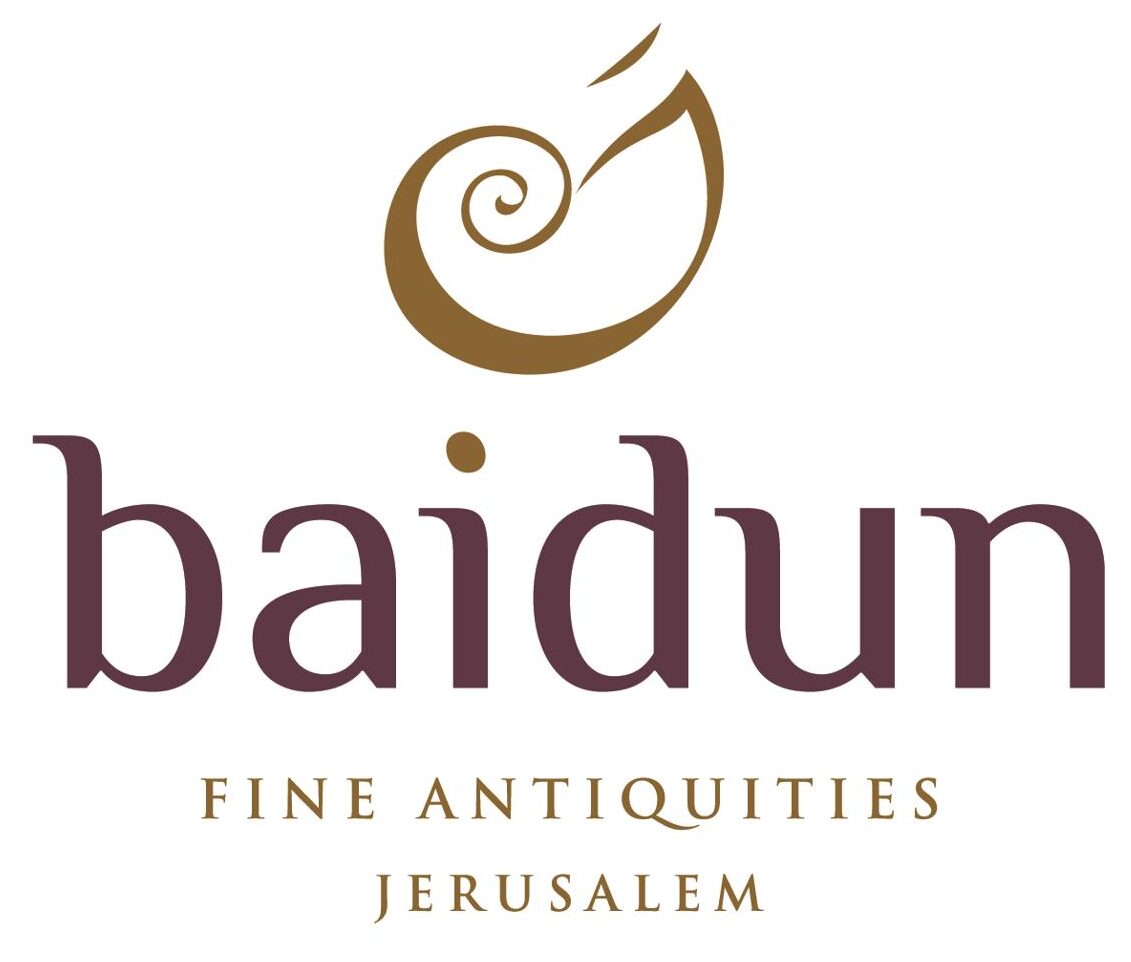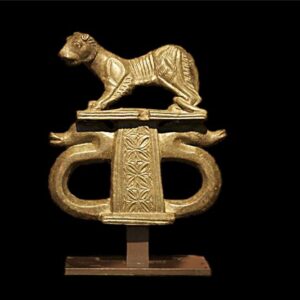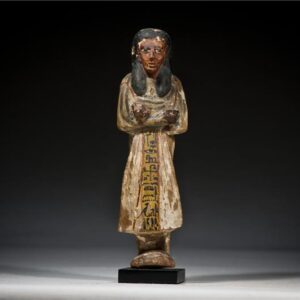Greek Terracotta Rhyton with Griffin Protome
This characterful Greek terracotta Rhyton dates from the Hellenistic period, 500 B.C.E. – 400 B.C.E. The Rhyton’s protome end is molded into the form of what appears to be a smiling Griffin whose head is at an angle that would have been comfortable to hold while in use. It has red painted slip over the terracotta to give it a warmer shade as well as an attractive shine. These type of vessels hail from the ancient Near East where more luxurious examples can be found made from precious metals.
Characteristics of Rhytons / Rhyta
A rhyton (plural rhytons or, following the Greek plural, rhyta) is a roughly conical container from which fluids were intended to be drunk or to be poured in some ceremony such as libation, or merely at table. They are typically formed in the shape of an animal’s head, and were produced over large areas of ancient Eurasia, especially from Persia to the Balkans. Many have an opening at the bottom through which the liquid fell; others did not, and were merely used as drinking cups with the characteristic that they could not usually be set down on a surface without spilling their contents.
The conical rhyton form has been known in the Aegean region since the Bronze Age, or the 2nd millennium B.C.E. However, it was by no means confined to that region. Similar in form to – and perhaps originating from – the drinking horn, it has been widespread over Eurasia since prehistoric times. Rhytons were very common in ancient Persia, where they were called takuk (تکوک). After a Greek victory against Persia, much silver, gold, and other luxuries – including numerous rhytons – were brought to Athens. Persian rhytons were immediately imitated by Greek artists as featured here with this Rhyton.
Origins of Rhyton / Rhyta
The word rhyton is the Greek neuter of rhytos “flowing,” from rhein “to flow,” plural rhyta (Wissowa, 1935, pp. 643-45). The word is often translated as “drinking horn,” primarily because of its appearance, due to its manufacture from the curved horn of a bovid. Early in prehistory the rhyton must have been developed out of such simple drinking horns. Later, the lower part of the horn was changed in form and was elaborated with a protome—the sculptured forepart of an animal.
The materials used for rhyta originally must have been the natural horns of animals such as oxen, cows, and buffalos, as well as possibly goats, ibexes, and others, but such rhyta have not survived archeologically. From the 1st millennium BCE, we find such vessels made of ceramic (Kawami, 1992; Haerinck, 1983). From the time of the Achaemenids, we find pieces in gold and silver, and from the time of Alexander the Great (Pfrommer, 1993; Giumlia-Mair and La Niece, 1998, pp. 139-45) up to the end of the Parthian period, examples in gilded silver.
Sources:
1.) Wikipedia – Rhyton
2.) Encyclopedia Iranica – Rhyton
5.) The Met Museum, New York City
7.) Penn Museum
8.) Mlahanas.de









